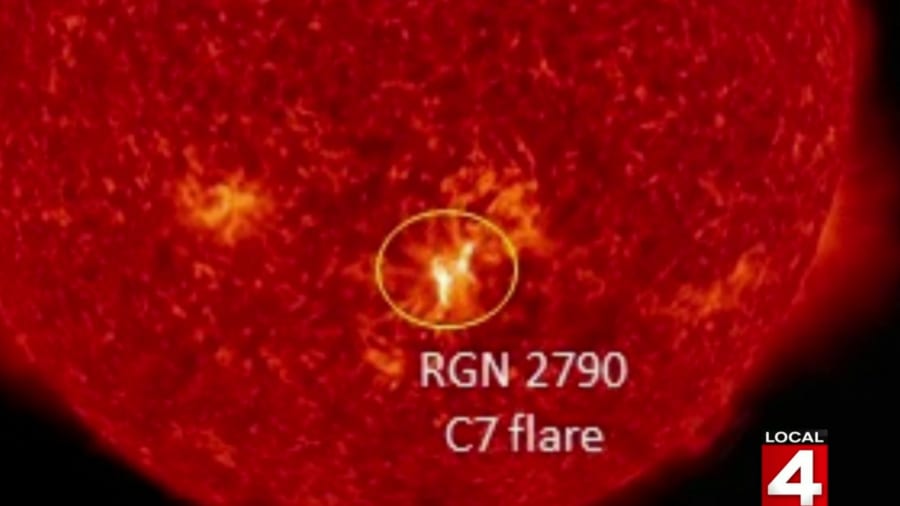DETROIT – A geomagnetic storm watch has been issued across parts of North America, including right here in Michigan.
- Second chance for Northern Lights Thursday night in Michigan: Here’s the update
A massive solar flare on the Sun erupted in the direction of Earth. That solar flare accelerated the normal stream of charged particles that comes from the Sun to the Earth.

That charge forces the aurora ring at the North Pole farther south. It’s going to get close enough to lower Michigan where people in Metro Detroit might have a chance to see the aurora borealis (Northern Lights) later Wednesday night or Thursday evening -- it has to be dark to see it.
If this happens either Wednesday night or Thursday evening, people in southern Michigan may be able to see the green glow or even a red one. If you see green or red in the sky, then you know you’re looking at the Northern Lights. If this happens during the daylight hours, we won’t be able to see it.
The key is going to be clear skies during dark hours.
Thursday morning update:
It appears that the Northern Lights didn’t get this far south Wednesday night to be visible in southern Michigan.
Earth’s magnetic field received the sudden impulse of accelerated charged particles from the sun at around 10 p.m., but the Planetary K Index, which scientists use to assess the disruption to our magnetic field and was forecast to be a 7 on the 0-to-9 scale, only ended up being a 4.
Translation: There wasn’t enough “oomph” to push that ring of Northern Lights down to southern Michigan.
We have a second chance Thursday evening from roughly 10 p.m. through 1 a.m. Friday, but the K Index is only forecasted to be a 6, so chances are slimmer. However the thing to remember is that the Wednesday night forecast was off and, if tonight’s K Index forecast also is off -- but in the other direction -- then we have a chance.
So if you’re out late this evening, face north and, if you see a greenish or grayish abnormal glow to the sky, then maybe you’re seeing the northern lights!
What are the Northern Lights?
The bright dancing lights of the aurora are actually collisions between electrically charged particles from the sun that enter the earth’s atmosphere. The lights are seen above the magnetic poles of the northern and southern hemispheres.
They are known as “aurora borealis’ in the north and “aurora australis” in the south. Auroral displays appear in many colors although pale green and pink are the most common. Shades of red, yellow, green, blue, and violet have been reported.
The lights appear in many forms from patches or scattered clouds of light to streamers, arcs, rippling curtains or shooting rays that light up the sky with an eerie glow.


